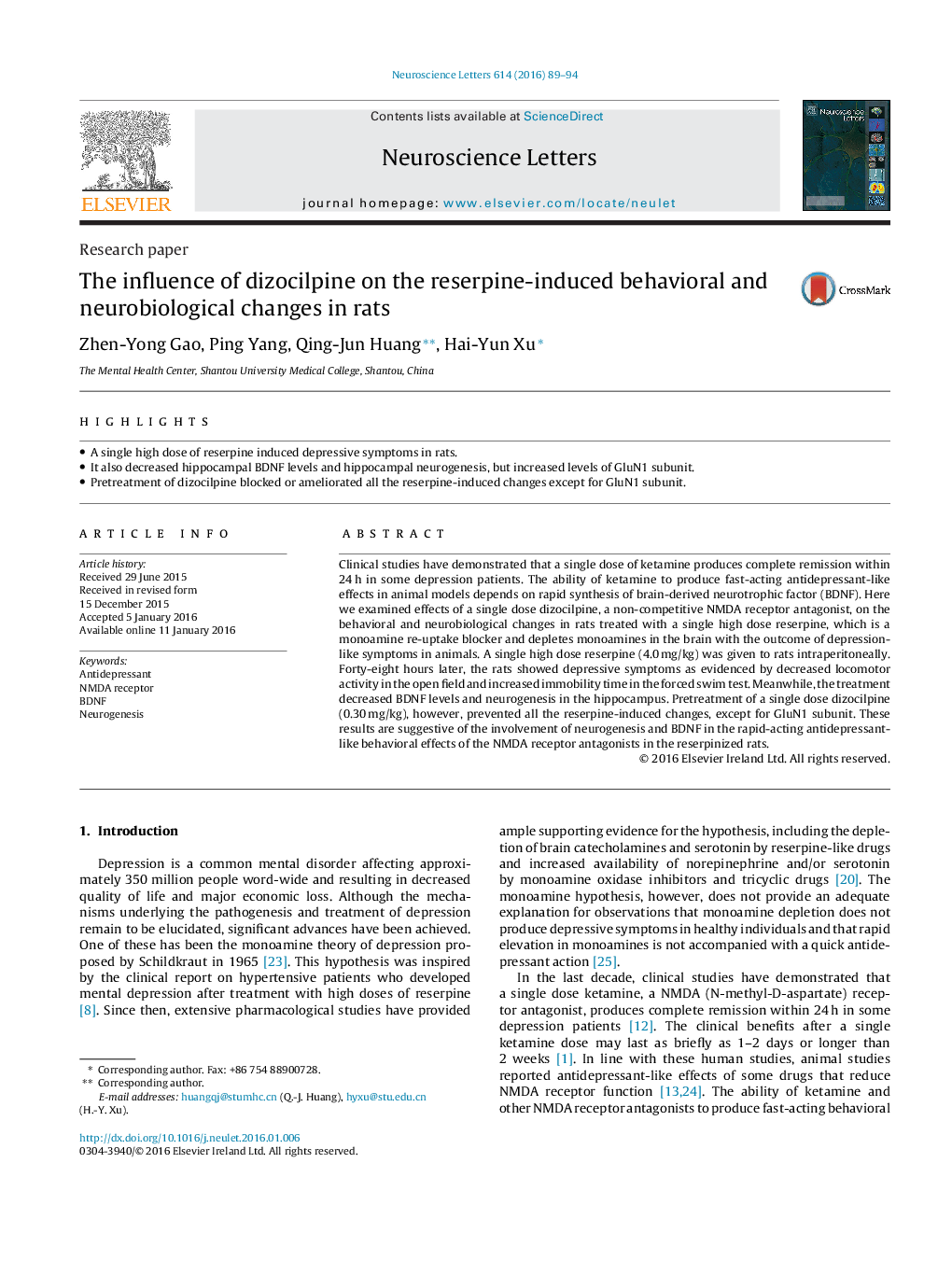| کد مقاله | کد نشریه | سال انتشار | مقاله انگلیسی | نسخه تمام متن |
|---|---|---|---|---|
| 6280169 | 1615085 | 2016 | 6 صفحه PDF | دانلود رایگان |
• A single high dose of reserpine induced depressive symptoms in rats.
• It also decreased hippocampal BDNF levels and hippocampal neurogenesis, but increased levels of GluN1 subunit.
• Pretreatment of dizocilpine blocked or ameliorated all the reserpine-induced changes except for GluN1 subunit.
Clinical studies have demonstrated that a single dose of ketamine produces complete remission within 24 h in some depression patients. The ability of ketamine to produce fast-acting antidepressant-like effects in animal models depends on rapid synthesis of brain-derived neurotrophic factor (BDNF). Here we examined effects of a single dose dizocilpine, a non-competitive NMDA receptor antagonist, on the behavioral and neurobiological changes in rats treated with a single high dose reserpine, which is a monoamine re-uptake blocker and depletes monoamines in the brain with the outcome of depression-like symptoms in animals. A single high dose reserpine (4.0 mg/kg) was given to rats intraperitoneally. Forty-eight hours later, the rats showed depressive symptoms as evidenced by decreased locomotor activity in the open field and increased immobility time in the forced swim test. Meanwhile, the treatment decreased BDNF levels and neurogenesis in the hippocampus. Pretreatment of a single dose dizocilpine (0.30 mg/kg), however, prevented all the reserpine-induced changes, except for GluN1 subunit. These results are suggestive of the involvement of neurogenesis and BDNF in the rapid-acting antidepressant-like behavioral effects of the NMDA receptor antagonists in the reserpinized rats.
Journal: Neuroscience Letters - Volume 614, 12 February 2016, Pages 89–94
